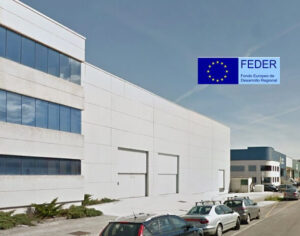
History of dental care: a journey through time

Dental care is a practice that has evolved significantly over the centuries, from rudimentary methods in ancient times to the sophisticated techniques and technologies of today.
Understanding how dental care has changed over time allows us to appreciate the advances in oral health and how these have improved our quality of life.
Below, we explore the most important milestones in the history of dental care.
The first signs of dental care in prehistory
Dental care has its roots in prehistory, where evidence has been found of early humans attempting to treat dental problems with simple tools.
Archaeological remains suggest that our ancestors used wooden and bone toothpicks to clean between their teeth. In addition, skulls have been discovered with teeth that show signs of having been scraped or drilled out, indicating that they were trying to relieve dental pain caused by cavities or infections.
These early attempts at dental care may seem primitive, but they show an early understanding of the importance of maintaining oral health. The evolution of these practices laid the groundwork for the development of modern dentistry .
Dentistry in ancient civilizations
Ancient civilizations, such as the Egyptians, Greeks, and Romans, made significant contributions to dental care. The Egyptians, for example, pioneered the use of powder mixtures to clean teeth , using ingredients such as myrrh, ground eggshell, and pumice. Egyptian medical papyri also contain recipes for treating toothache, including ingredients such as onion and acacia gum.
The Greeks and Romans, meanwhile, advanced the understanding of dental diseases and their treatments.
Hippocrates, considered the father of medicine, wrote about treating dental problems, recommending the use of wire to stabilize loose teeth. The Romans also developed techniques for extracting teeth and creating rudimentary dentures, using gold and bone.
Middle Ages and Renaissance: A period of stagnation and rebirth
During the Middle Ages, dental care suffered a setback due to the influence of the Church, which viewed dental treatment as a less important practice. Medical knowledge was largely lost, and dental care was relegated to barbers and blacksmiths, who performed tooth extractions without anesthesia and with rudimentary tools. However, these procedures were extremely painful and often led to serious infections.
The Renaissance marked a revival in interest in science and medicine, which also affected dental care. A
dvances in human anatomy and medicine allowed physicians and scientists to better understand the structure and function of teeth. During this period, new dental instruments were introduced, and knowledge about dental diseases and treatments began to be more formally documented.
When did modern dentistry emerge?
Modern dentistry began to take shape in the 18th century, when Pierre Fauchard, a French dentist, is known as the father of modern dentistry .
In 1728, Fauchard published “Le Chirurgien Dentiste” (The Dental Surgeon), a treatise that laid out the foundation for dental practice as we know it today. In his work, Fauchard described advanced techniques for tooth extraction, treating cavities, and constructing dental prosthetics.
Throughout the 19th century, dentistry continued to evolve with the introduction of anesthetics such as ether and nitrous oxide, which made treatments less painful and more accessible.
The development of specialized tools, such as the first dental drills and extraction forceps, also helped improve the precision and effectiveness of dental procedures.
20th Century: Revolution in Dental Care
The 20th century was a period of revolution in dental care , with significant advances in dental technology and materials. The introduction of fluoride toothpaste in the 1950s was a major milestone in the prevention of tooth decay, by helping to strengthen tooth enamel and reduce the incidence of cavities globally. Fluoridation of drinking water also played a crucial role in improving public dental health.
In addition, the 20th century saw the emergence of modern orthodontics, with the development of braces and dental appliances to correct the alignment of teeth. Advances in dental implantology allowed for the replacement of missing teeth with titanium implants, significantly improving the quality of life for many people.
Dentistry in the 21st century: Technology and personalized care
In the 21st century, dentistry has continued to evolve with the incorporation of advanced technologies and a focus on personalized care. Digital dentistry, with the use of 3D printing and intraoral scanners, has revolutionized the way dental prosthetics are designed and manufactured, allowing for greater precision and comfort for the patient.
In addition, the use of lasers in dental treatments has allowed for less invasive procedures with a faster recovery. Conscious sedation and advanced anesthesia techniques have improved the patient experience, making dental treatments less feared and more accessible. Personalized dental care, based on genetics and the specific needs of each patient, is a growing trend in modern dentistry.
This approach allows dentists to offer more effective and preventative treatments, tailored to the individual characteristics of each person. In conclusion, the history of dental care is a fascinating journey through time, from the rudimentary methods of prehistory to the sophisticated techniques and technologies of the 21st century.
Each stage in the evolution of dentistry has contributed to improving the oral health and quality of life of millions of people around the world. Today, dental care continues to advance, with a focus on prevention, technology and personalized care, ensuring that future generations enjoy optimal and long-lasting oral health.
Share



